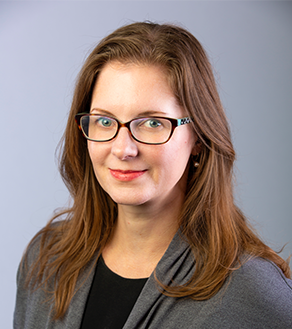Recent News
New director will enhance interdisciplinary engineering learning opportunities
July 2, 2025
Final SIRI cohort visits UNM campus
June 30, 2025
Perfetti receives ANS Landis Engineering Achievement Award
June 26, 2025
Engineering a new treatment for ovarian cancer
June 24, 2025
News Archives
Engineering alumna author on paper on achieving a burning plasma state
January 28, 2022 - by Kim Delker

Kelly Hahn, who earned three degrees from The University of New Mexico School of Engineering, is one of the authors of a Nature Physics article that details how researchers at Lawrence Livermore National Laboratory (LLNL) have achieved a burning plasma state.
The work, which focuses on the designs that led to these results, is featured in the Jan. 26 issue of Nature Physics titled “Design of inertial fusion implosions reaching the burning plasma regime,” with LLNL physicists Annie Kritcher and Chris Young serving as lead authors.
A burning plasma state was achieved in November 2020 and February 2021 at Lawrence Livermore National Laboratory’s National Ignition Facility, the world’s most energetic laser.
This achievement is significant because creating burning plasma is the last remaining milestone in fusion research before attaining ignition and self-sustaining energy. In this state, the fusion reactions themselves become the dominant source of heating in the plasma, but do not yet overcome all mechanisms of energy loss.
Hahn works at the National Ignition Facility Implosions and Stagnation group at Lawrence Livermore National Laboratory, where she leads and participates in projects involving high-energy-density physics.
She earned three degrees from UNM's Department of Electrical and Computer Engineering: a bachelor's in 1999, a master's in 2002 and a Ph.D. in 2006, working with Distinguished Professor Edl Schamiloglu. In 2019, she was selected for the Distinguished Young Alumni Award by the School of Engineering.
